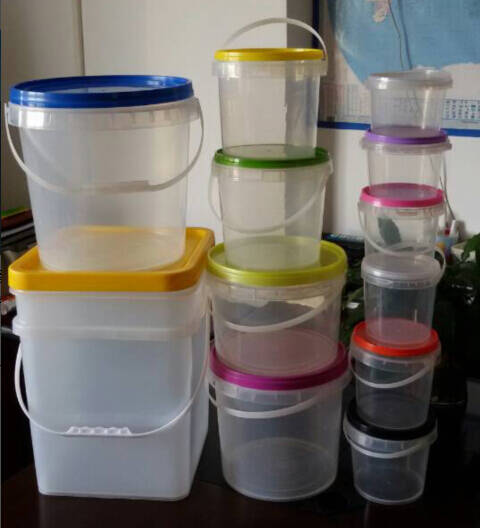Email format error
Email cannot be empty
Email already exists
6-20 characters(letters plus numbers only)
The password is inconsistent
Email format error
Email cannot be empty
Email does not exist
6-20 characters(letters plus numbers only)
The password is inconsistent

Plastic Injection Moulding Machine Manufacturer
Latest Blog

Mastering Injection Molding: A Comprehensive Guide to Machines and Maintenance for Plastic Container Production
Introduction
In the realm of modern manufacturing, injection molding stands tall as one of the most versatile and efficient processes, particularly in the production of plastic containers. This article aims to delve deep into the world of injection molding, starting with an exploration of its fundamental concepts and importance in plastic container manufacturing. From there, we will embark on a journey to uncover the various types of injection mold machines available, including hydraulic, electric, and hybrid models. Finally, we'll shift our focus to the critical aspect of maintenance and servicing guidelines, offering practical tips to ensure the optimal performance and longevity of these machines.
I. Introduction to Injection Molding
Injection molding is a manufacturing process that involves injecting molten material into a mold cavity, where it solidifies to form the desired shape. This process is highly favored for its ability to produce large quantities of complex parts with high precision and consistency. In the context of plastic container manufacturing, injection molding plays a pivotal role in meeting the ever-growing demand for packaging solutions across industries.
Historically, injection molding has its roots in the early 20th century, but it wasn't until the mid-20th century that significant advancements propelled it into mainstream manufacturing. Today, injection molding stands as a cornerstone of modern industry, offering unparalleled efficiency and versatility in producing a wide range of plastic products, including containers of various shapes, sizes, and functionalities.
II. Types of Injection Mold Machines
A. Hydraulic Injection Mold Machines
Hydraulic injection mold machines are among the oldest and most widely used types of machines in the injection molding industry. These machines utilize hydraulic systems to generate the force needed to inject molten material into the mold cavity. While they may not offer the same level of speed and precision as electric machines, hydraulic machines excel in their ability to handle high-tonnage applications and withstand rugged operating conditions.
B. Electric Injection Mold Machines
In recent years, electric injection mold machines have gained significant traction in the industry due to their superior precision, energy efficiency, and cleanliness. Unlike hydraulic machines, electric machines rely on electric motors to drive the injection process, resulting in smoother and more precise movements. This makes them particularly well-suited for applications that require intricate designs and tight tolerances, such as medical device components and consumer electronics.
C. Hybrid Injection Mold Machines
Hybrid injection molding machines combine the best of both hydraulic and electric technologies, offering a balance between performance and efficiency. These machines typically feature electric-driven injection units paired with hydraulic clamping systems, allowing for greater flexibility and energy savings without compromising on power or speed. Hybrid machines are increasingly popular in industries where versatility and cost-effectiveness are paramount, such as automotive and aerospace manufacturing.
III. Maintenance and Servicing Guidelines
A. Importance of Regular Maintenance
Regular maintenance is crucial for ensuring the reliability and longevity of injection mold machines, especially in high-volume production environments. By implementing a proactive maintenance regimen, manufacturers can minimize downtime, reduce the risk of costly repairs, and optimize overall production efficiency.
B. Preemptive Maintenance Practices
Preemptive maintenance involves performing routine inspections, cleaning, and lubrication to prevent potential issues before they escalate into major problems. This includes regularly checking for signs of wear and tear on machine components, such as screws, barrels, and hydraulic cylinders, and replacing them as needed. Additionally, proper lubrication of moving parts is essential for reducing friction and extending the lifespan of critical components.
C. Troubleshooting and Repair Tips
Despite diligent maintenance efforts, injection mold machines may still encounter occasional issues that require troubleshooting and repair. Common problems include fluctuations in injection pressure, temperature control issues, and mold alignment problems. When faced with such challenges, it's essential to diagnose the root cause promptly and take appropriate corrective actions to minimize downtime and prevent production delays.
D. Professional Servicing Considerations
While routine maintenance tasks can often be performed in-house by trained personnel, certain servicing tasks may require the expertise of qualified technicians. Establishing a partnership with a reliable service provider can provide peace of mind and ensure that injection mold machines receive the attention they need to operate at peak performance. Scheduled servicing contracts offer a cost-effective solution for manufacturers looking to maintain their machines' health and productivity over the long term.
Conclusion
In conclusion, mastering the art of injection molding requires a comprehensive understanding of the different types of injection mold machines available and the implementation of proactive maintenance and servicing practices. By investing in the right equipment and adopting a proactive approach to maintenance, manufacturers can unlock the full potential of injection molding technology and stay ahead in today's competitive market landscape.

